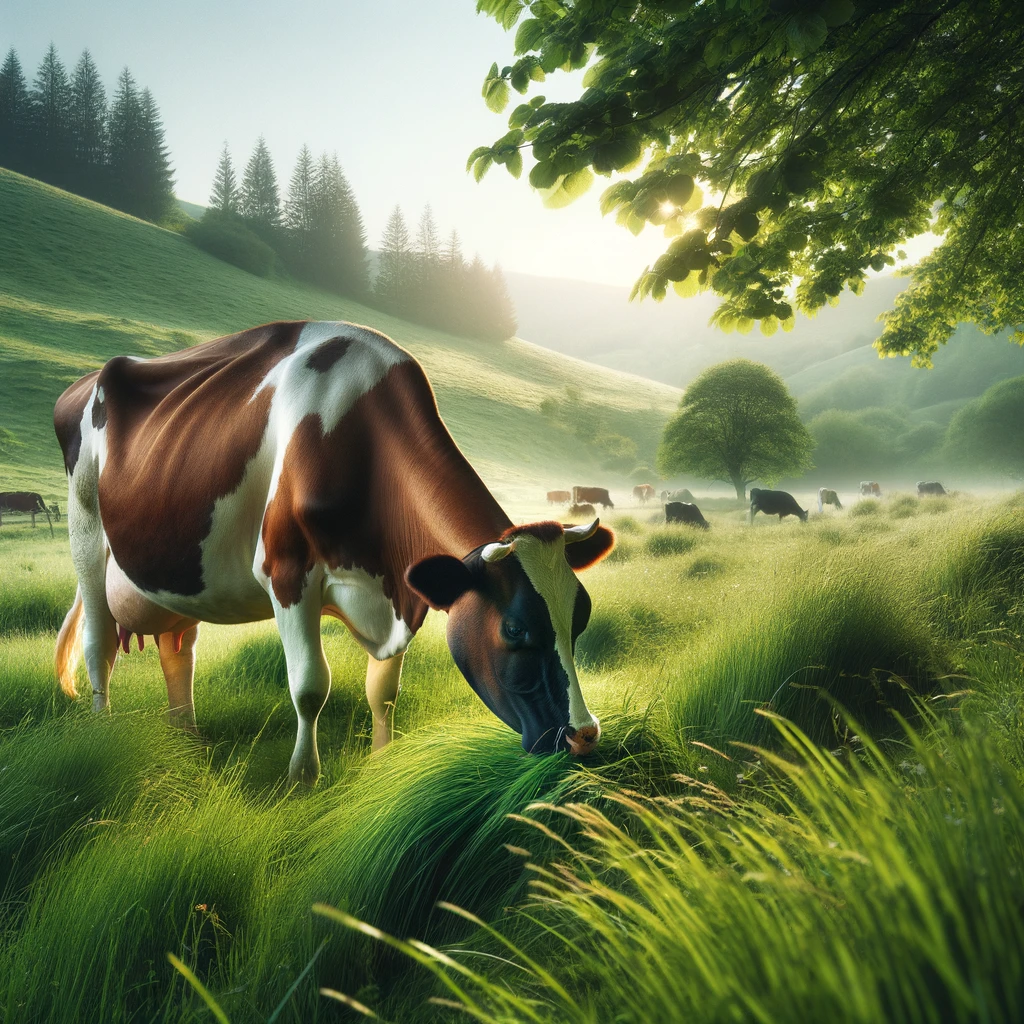We have the answer to How Long Does A Cow Live? Cows, on average, can live between 15 to 20 years under good care and in optimal conditions. However, this lifespan can vary significantly depending on various factors, including the breed of the cow, the quality of care and husbandry practices, and whether the cow is being raised for dairy, beef, or as a work animal. In some cases, particularly well-cared-for cows can live longer, with lifespans extending into their twenties or even beyond. It’s important to note that in commercial dairy and beef production, cows often have shorter lifespans due to economic and production considerations.

Cows, revered and utilized in various cultures worldwide, are more than just domesticated animals. They play a crucial role in agricultural economies and have been an integral part of human civilization for thousands of years. This article explores what a cow is, how it helps us, its life cycle, and more about these remarkable animals.
What is a Cow?
A cow is a domesticated mammal from the Bovidae family. Cows are raised primarily for their milk, meat, and as draft animals. The female of the species is known as a cow, while the male is called a bull. Young cows are referred to as calves. Dairy cows are bred for high milk production, whereas beef cows are reared for meat.
How much grass does a cow consume per day?
A cow typically consumes about 2.0% to 2.5% of its body weight in dry matter each day when it comes to grass and other forages. For a mature cow weighing around 1,400 pounds (about 635 kilograms), this equates to approximately 28 to 35 pounds (about 12.7 to 15.9 kilograms) of dry matter daily.
However, it’s important to note that this is a rough estimate and actual consumption can vary based on several factors, including the cow’s size, breed, age, health, and whether it’s lactating. Additionally, the type of grass and its moisture content also play a role; fresh grass contains more water, so cows may consume a higher weight of fresh grass compared to dry forages to meet their nutritional needs.
The Utility of Cows
- Milk Production: Cows are a primary source of milk, an essential component in diets worldwide. Products like cheese, butter, yogurt, and cream are derived from cow’s milk.
- Meat Production: Beef, obtained from cows, is a staple protein source in many diets.
- Agricultural Work: In many parts of the world, cows are used for plowing fields and other agricultural tasks.
- Leather and By-products: The leather industry heavily relies on cowhide. Additionally, by-products like manure are used as fertilizer, and cow bones are utilized in various industries.
Reproduction and Birth
Cows are mammals, and their reproduction is viviparous, meaning they give birth to live young. A cow’s gestation period is about nine months. Cows often give birth to one calf at a time, although twins are not uncommon. The first few hours post-birth are crucial for the calf to receive colostrum, the first milk rich in antibodies.
The Calf
A baby cow is called a calf. For the first few months, calves primarily consume milk, either from their mothers or a milk replacer. As they grow, they gradually start eating solid foods like grass and grains. Female calves (heifers) may become part of the dairy herd if raised on a dairy farm, while male calves (bull calves) may be raised for beef or used as draft animals.
Lifespan and Care
Cows generally live for 15 to 20 years under proper care. Their lifespan can vary based on breed, living conditions, and whether they are raised for dairy, meat, or work. Good veterinary care, proper nutrition, and humane living conditions are essential for their health and longevity.
Environmental Impact
Cows have a significant environmental impact, particularly concerning greenhouse gas emissions. Methane, a byproduct of their digestion, contributes to global warming. Sustainable farming practices are being developed to mitigate this impact.
Cultural and Religious Significance
In many cultures, cows hold religious and cultural significance. For instance, in Hinduism, cows are revered and considered sacred. Across various societies, cows symbolize nourishment, motherhood, and sustenance.
Cows are much more than livestock. They are an integral part of the agricultural ecosystem, contributing significantly to human nutrition, economies, and cultures. Understanding their life, utility, and the care they require helps appreciate their role in our lives. Sustainable practices and humane treatment are crucial in maintaining their health and productivity, ensuring that they continue to be an integral part of human life while minimizing their environmental impact.

